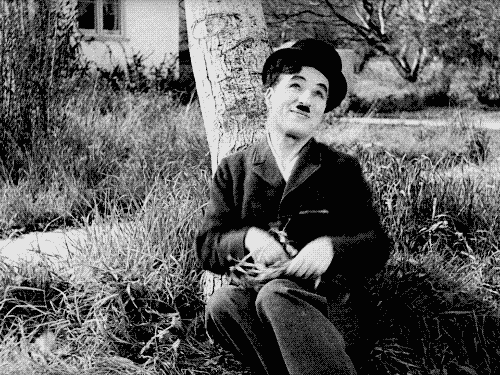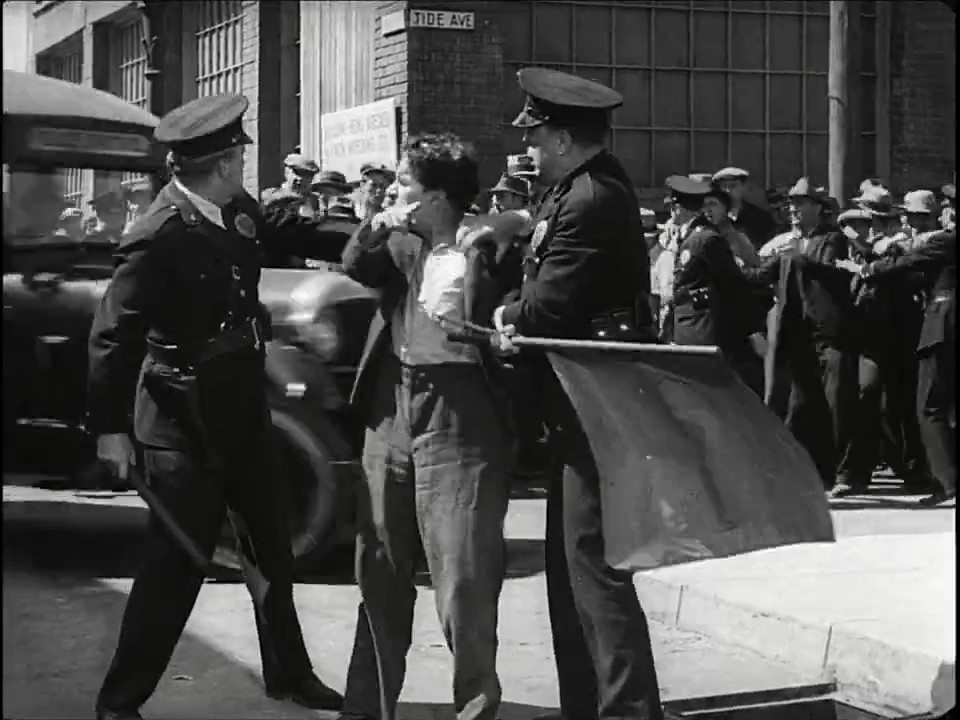I have been very busy in the past few months. Lately, I have had a little bit more of time in my hands to watch films and think about them. I have explored some Charlie Chaplin films. Some of the films were suggested to me by RS. Here are the films that I saw.
| Film name | Year of release |
|---|---|
| The Kid | 1921 |
| City Lights | 1931 |
| Modern Times | 1936 |
| The Great Dictator | 1940 |
Each of these films is excellent and each one of them merits a blog post in itself. The most thought-provoking of them all is Modern Times, and I’ll express some thoughts about it in this blog post. Although this post will contain spoilers of the film, I don’t think there is much to spoil in this film. There are no plot-twists or any elements of surprise. The film is a very light-hearted comedy like all Charlie Chaplin films.
What is it about?
The film is about the situation of individuals in a highly industrialised society. The theme of the film is machine-labour, consumerism, capitalism and class-divide. It is a very well-posed deliberation about the socio-political anxieties of the Depression era, in which the world seemed to be rapidly heading towards another world war while emerging from the economic depression of the first one. Even though the film is about all of this, yet on the surface it is simply a gentle comedy about the struggle of an individual.
Charlie Chaplin appears as his iconic character the Tramp, who is a social outcast living on the edges of the division of classes. Chaplin’s then wife, Paulette Goddard, appears as The Gamin who is also a similar character.
According to this source, the legend is that Charlie Chaplin was inspired to make this film from a meeting with Mahatma Gandhi where they argued about the role of machines. Gandhi held the position that industrialized England was bringing ruin to the colonized India through mechanized production, and while Chaplin probably did not argue against it, he thought mechanization was bringing more leisure time to the common folk.
The film starts with a brilliant jump cut from a herd of cattle to a hoard of people in a city and immediately dives into the life of the Tramp as an overworked factory employee. Just this starting scene was enough for me to get hooked immediately.

The film’s prologue
Charlie Chaplin and The Tramp
Charlie Chaplin was a genius. His mannerisms, body language and expressions convey so much of the story and emotions in the film, which especially comes out as a point considering this film was released well into the “Talkies” era (my grandmother used to call films “talkies”, which for a long time I did not understand. Talkies had come much later to India). He is such a delight to look at; his smile, his little moustache and definitely how high his eyebrows can jump! Perhaps I have joined this bandwagon late, but please put me in whichever Charlie Chaplin fan-club exists today.

His expressions are now memes.
This film came around the time when Chaplin, who was an English immigrant, was starting to be seen as a communist by some affluent members of the US government and later was famously kicked out of the country. In a scene which perhaps intentionally alludes to this, the Tramp gets caught by the police and gets falsely blamed for leading a worker’s uprising.

He was just trying to return that flag.
The Tramp character is the best-fit for being the main protagonist to depict the turmoil of the time. Although, he clearly lives in the rags and is the fringe of the society, throughout the film he depicts aspirations to rise his status, own a house, get a job, and fails at all of these things! His clothing is a very comical approximation of what rich people of the times looked like and his personality is always that of someone who wants to be treated with dignity and respect. The Tramp is funny, and yet through his silence conveys the emotions of a very deeply confused character.
The nonsense song
Charlie Chaplin never wanted his Tramp to speak. Hence, even after audio and dialogue had well become part of the film-making standards, and even though this film has some dialogues, the Tramp never speaks. By 1936, the Tramp was one of the most recognizable faces throughout the world but most of the magic of Charlie Chaplin’s talent was in actions, not words.
In a solid build-up to a climax where the Tramp was to do a singing performance, the film wonderfully takes us to the most amazing thing the Tramp could have done. He does open his mouth, but watch what happens!
What an excellent performance! Watching this, I got an eerie feeling that Chaplin slightly breaks from his character. His dance moves look very calculated and precise and his innocence vanishes. Indeed, this was too high a note for the Tramp to hit and having spoken the first time as the Tramp, Chaplin had crossed the Rubicon by his own standards. The film ends shortly after this with the Tramp and the Gamin walking away, perhaps in retirement.

Is this foreshadowing Chaplin’s move to Switzerland?
Fordism, mechanization
In the 1932 book Brave new world by Aldous Huxley, society starts to worship Henry Ford. This movie has some impressions of such a society in the first few scenes where a God-like capitalist controls the production factory our dear Tramp works in and tries to test automatic feeding machines to optimize work output with shorter lunch breaks. The Tramp is the first test-case of this machine.

Of course, you could guess how that turns out.
During the depression era, some people believed mechanization was creating unemployment. How true is this? It is a controversial belief that it can create long-lasting impacts but there seems to be a universal agreement among economists that technological unemployment exists in the short-term. In the film, the Tramp suffers from not just being unemployed but also from being hilariously unskilled. But overall, the message that his struggle is trying to deliver is very clear.
Modern Times in modern times
Henry Ford used to spy on his employees. Ugly Fordism continues to thrive where companies cheat and spy on their employees to squeeze more juice out of them. A Chinese tech company used cushions on office chairs to tell if their workers are not on their seats. Amazon is also a major offender in this matter. Workers are seen more and more as machines, and often are even replaced by them.

In this iconic scene from the film, Charlie Chaplin literally becomes a cog in the machine.
Automation continues to eradicate certain types of jobs and create unemployment. Unemployment is definitely a serious political issue in developing countries like India. Large corporates abuse workers and activists get unfair punishments. All this is very relevant today and it is amazing how a film made in 1936 resonates with these issues. COVID-19 has created a new worldwide economic depression and I cannot help but recommend this film to all those waiting to see how the future is going to turn out in anxiety. To know the future well, one must know the past even better.
Comparisons and recommendations
Many of the gags that we see in Charlie Chaplin films have been used in so many other films and shows. While watching his content, I would always get reminded scene after scene of similar scenes from some Looney Tunes cartoon or Tom and Jerry. Of course, Charlie Chaplin must have invented many of these gags. Charlie Chaplin was famous for not having written scripts and would just test various ideas on screen and weave a story around it.
If you want more of Charlie, do watch his other films that I have listed above. Especially City Lights, if you want to see the same magic but with less socio-political undertones.
By 1940, two of the most famous men in the world were Charlie Chaplin and Adolf Hitler. Both of them were short, were recognized by the same style of moustache and were born four days apart! The two personalities collide in the film The Great Dictator that Chaplin worked on after Modern Times. This has Chaplin doing lots of talking, but it does not have him playing the Tramp. A Jewish barber character played by him in the film is very similar to the Tramp, possibly for marketing reasons.
Chaplin is a 1992 film produced and directed by Richard Attenborough. Robert Downey Jr. plays Charlie Chaplin and does an absolutely fabulous job at that. Geraldine Chaplin, the actual daughter of Charlie Chaplin, plays the mother of Charlie Chaplin in the film. It is not a very entertaining film but gives us a very good overview of Chaplin’s life. Attenborough also created Gandhi in 1982, so it is possible that in a fictional universe Ben Kingsley and RDJ meet in character as Gandhi and Chaplin. Unfortunately, Attenborough missed that opportunity. Knowing this makes watching Iron Man 3 all the more worthwhile, if you have not seen it yet.
Interestingly, while RDJ’s Chaplin is dressing up as the Tramp for the first time in this film, Mack Sennett (played by Dan Aykroyd) says, “What’s taking him so long? Is he putting on a suit of armour?”.
Watching Chaplin films also reminded me a lot of Raj Kapoor, our very own Indian Chaplin who often portrayed a tramp-like figure. It inspires me to watch (re-watch, in some cases) some of his films too.
Conclusion
I wrote quite a lot of words about this film! The only reason why that is, is this film genuinely provoked me that much. If you watch it, I’m sure it will make you ponder a lot too.